
- Search
-
Login
-
0
ComparisonAdd products to compare, then they will appear here and you can compare parameters.
-
0
0 €Nothing in the basket.
News
The new Adobe Premiere Pro CC 2014.2 update contains some important editing enhancements, including support for Arri Open Gate media, the ability to set transitions and still image default durations in seconds or frames and Cineform Export improvements. Adobe also improved scrubbing and shuttling in long GOP MXF files. In addition, QuickTime and Cineform codecs are now available for use as sequence preview file formats on Windows. Download Premiere Pro CC 2014.2 via Creative Cloud on your desktop, or online through your Creative Cloud account. A large number of known issues and bugs have been fixed:
XDCAM HD proxy files appear with red frames.
Crash using ripple trim on a grouped clip.
Missing clips after Consolidating and Transcoding overlapping subclips.
Crash when pressing Setup button of a AE-style transition.
Comment Markers added to a merged clip get added to constituent clips, but the Name & Comments are not saved.
Stop playback command ignored when editing or playing a multicam sequence.
Crash exiting Direct Manipulation mode in Program monitor.
Duplicate clips are missing from resulting project after Consolidate and Transcode.
Crash when exporting AAF from a sequence containing clips opacity and scaling.
GoPro 2.7K footage cannot be smart rendered when height is not evenly divisible by 8.
Crash when exporting AAF with disabled clips that have cross fades applied.
Turning on audio waveforms makes sequence unresponsive.
Audio drop out during loop playback.
MXF Media with Posterize Time Effect will not render.
Audio dropouts during shuttling.
Audio drops out while playing out to tape.
Consolidate and Transcode with a custom P2 preset does not work correctly.
Multiple accelerator files are generated on a network shared media cache location.
Switching between projects that use the same workspace, all open Project panels get reset to root.
Audio pops and surges during an audio transition.
Export AAF with 24 bit embed option creates distorted audio files.
Corrupt frames when rendering Sapphire effects and transitions.
Crash on launch if OS X update has changed permissions for certain folders to Read-Only.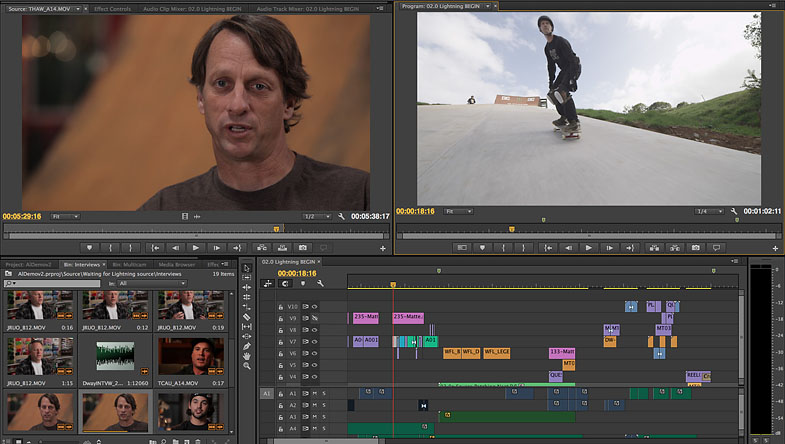
Blackmagic Design released new version 10.3.4 of its Desktop Video software for DeckLink, UltraStudio, Intensity and H.264 Pro Recorder capture and playback devices. Version for Windows and Mac OS X adds Avid Media Composer 8.3 and Adobe Premiere Pro CC 8.2 support, Linux version features updated driver to build against Linux 3.15 and later, and a fix for issue with updating firmware on DeckLink 4K Extreme 12G.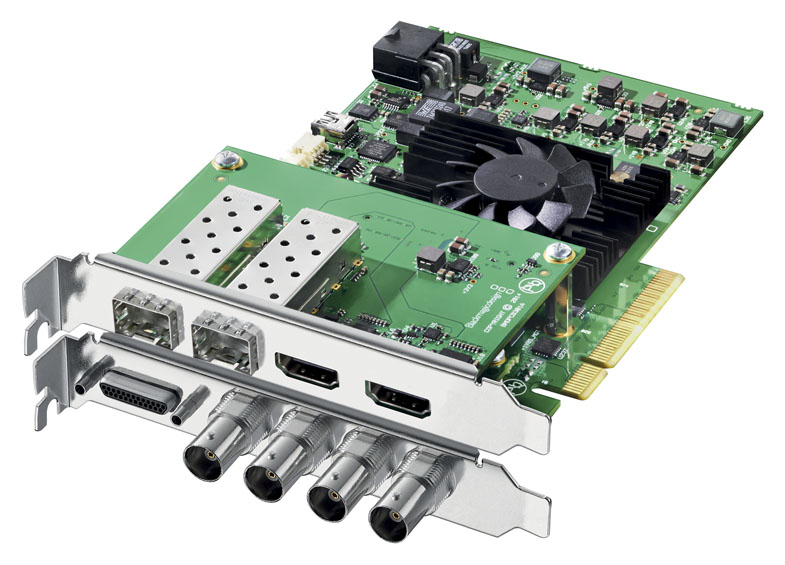
Fusion, the free of charge edition of Blackmagic Design's high-end video compositing software Fusion Studio for Windows, features advanced VFX compositing and motion graphics animation tools that include infinite 3D workspace, node-based workflow, professional keying, tracking, images retouching and paint, titles animation, 3D model import and rendering, 3D particle effects and much more. This new software update includes general performance improvements and enhancements, and is also available free of charge. To download the update, please visit blackmagicdesign.com/support.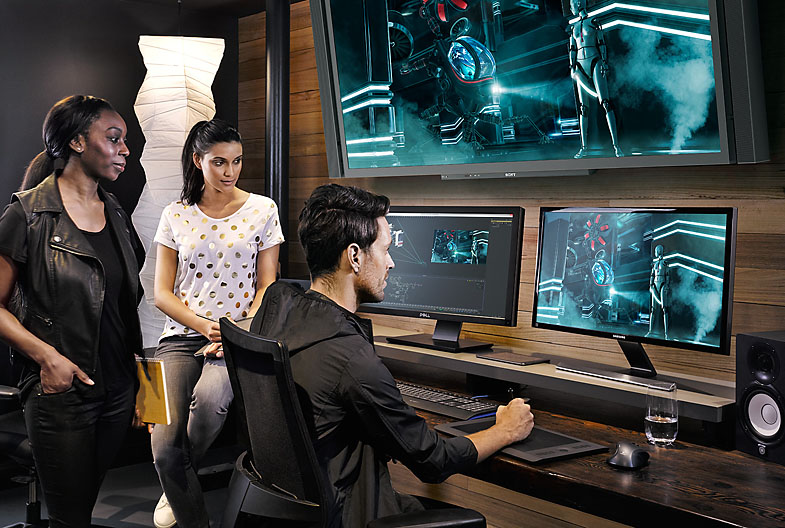
Blackmagic Design has released Blackmagic Camera Utility 1.9.11, available for download from their support page. Blackmagic Camera Utility 1.9.11 provides the following updates for both Blackmagic Studio Camera HD and Blackmagic Studio Camera 4K:
* New Details option in camera
* New support for independent control of front and rear tally brightness
* Added "Ch 2 used Ch 1 Input" option in Audio settings
* Added camera settings information in display overlay
Blackmagic Design has also released ATEM 6.2 software update, which adds zoom control for Blackmagic Studio Cameras with compatible lenses. To download these updates, please visit blackmagicdesign.com/support.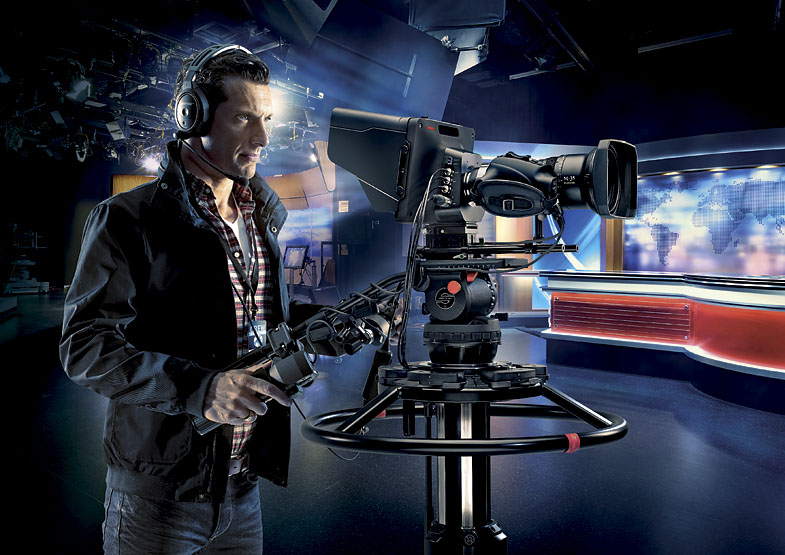
Press Release
Major new software for Teranex standards converters including centralized control of all Teranex features, plus new 12G-SDI to Quad 3G-SDI conversions up to 2160p60 on Teranex Express!
Blackmagic Design announced a major update for its Teranex 2D, 3D and Express converters. The Teranex 3.1 update adds a new software application that lets customers remotely set up and change settings on their Teranex converters from a central location, as well as adding a new 12G-SDI to quad HD-SDI conversions to Teranex Express.
Teranex 3.1 update is available for download free of charge from the Blackmagic Design website.
Teranex 3.1 update includes a new centralized control software application called Teranex Setup. Available for both Mac OS X and Windows computers, Teranex Setup lets customers remotely setup and control their Teranex 2D, 3D and Express converters. The software will automatically find Teranex converters on the network and and then take control of all features in the device. Teranex Setup features an intuitive and elegantly designed user interface that makes it easy for customers to access all of the most popular features like source and output selection, proc amp, color correction, aspect ratio, audio mapping and more. Settings made on the computer are changed instantly on Teranex, giving customers the ability to make on the fly adjustments to their live video feeds.
Teranex Setup is ideal for both small post houses and large broadcast customers. Smaller facilities can use it to share a converter with multiple users, while bigger customers can use it to manage and centralize the control of multiple converters on a large network. The new Teranex Setup software is easy to use and supports the latest technologies such as high resolution “Retina” displays found on today’s computers.
Teranex 3.1 update also gives Teranex Express customers an amazing new conversion features for managing high frame rate 12G-SDI connections as now Teranex Express can convert a 12G-SDI Ultra HD video feed into Quad Link 3G-SDI video. This Quad Link 3G-SDI is used on any Ultra HD monitor where the Ultra HD image is made of 4 x 1080HD SDI resolution video “tiles” that are recombined in the monitor as an Ultra HD image. Each of the Quad Link 3G-SDI feeds could also be sent to an independent monitor when creating video wall Ultra HD displays from four 1080HD resolution monitors.
The update supports Ultra HD frame rates ranging from 23.98fps to 60fps. That means Teranex Express can now be used for outputting Ultra HD to a wider range of display devices, including video walls, large LED screens and older 3G-SDI equipment. Because this update adds 30 and 60fps Ultra HD support to Teranex Express, customers now have a choice of up to 227 different types of conversions.
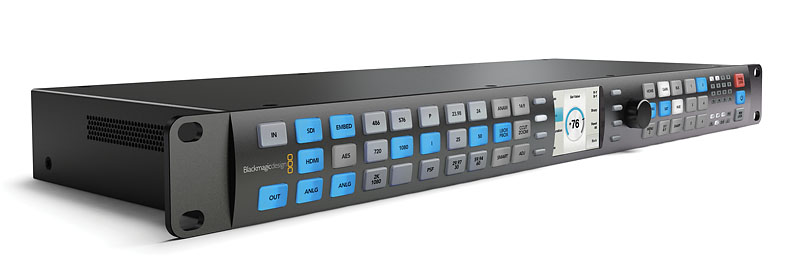
“Broadcasters ask for Teranex quality by name because they know it’s the best way to convert between different video formats and standards,” said Grant Petty, CEO, Blackmagic Design. “The new Teranex Setup software makes it easy to control Teranex converters from anywhere in a facility or studio, and the new Teranex Express quad mode will help customers integrate the latest 12G-SDI Ultra HD 2160p60 video devices into existing HD broadcast equipment!”
Availability and Price
Teranex 3.1 update is available now for download from the Blackmagic Design web site free of charge for all Teranex 2D, 3D and Teranex Express customers.
Press Photography
Product photos of the Teranex 2D, 3D and Teranex Express, and all other Blackmagic Design products, are available at www.blackmagicdesign.com.
About Blackmagic Design
Blackmagic Design creates the world’s highest quality video editing products, digital film cameras, color correctors, video converters, video monitoring, routers, live production switchers, disk recorders, waveform monitors and real time film scanners for the feature film, post production and television broadcast industries. Blackmagic Design’s DeckLink capture cards launched a revolution in quality and affordability in post production, while the company’s Emmy™ award winning DaVinci color correction products have dominated the television and film industry since 1984. Blackmagic Design continues ground breaking innovations including 6G-SDI and 12G-SDI products and stereoscopic 3D and Ultra HD workflows. Founded by world leading post production editors and engineers, Blackmagic Design has offices in the USA, UK, Japan, Singapore and Australia. For more information, please go to www.blackmagicdesign.com.

